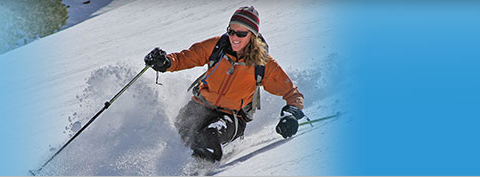Innovative Pain Management Approaches for Active Lifestyles
For athletes, weekend warriors, and fitness enthusiasts alike, injury or surgery isn’t just a setback, it’s a disruption of momentum. Reaching full performance means more than just healing; it requires managing pain in a way that supports movement, mobility, and motivation. In this article, we’ll explore time-tested strategies alongside innovative pain-management approaches designed to help active individuals recover efficiently, stay engaged in training, and return to the activities they love.

Why pain management matters for the active person
Pain isn’t simply an uncomfortable after‐effect: for the active athlete, it can interfere with mobility, strength gains, training consistency, and even mental focus. When you’re committed to your sport, fitness goals, or outdoor passions, adequate pain control isn’t optional; it’s essential. Moreover, inadequate pain management can delay rehabilitation, promote compensatory movement patterns, and increase the risk of re-injury.
Before we talk about the new stuff, let’s reinforce what always works:
1. Early motion and progressive loading
For many surgical or injury situations, getting movement going early (as guided by a physical therapist or surgeon) helps prevent stiffness, maintain circulation, and reduce the “guarding” that pain can cause. Progressive loading, which gradually increases the challenge while respecting the healing tissues, helps the nervous system recalibrate and the body adapt.
2. Multimodal analgesia & modalities
Standard care often includes anti-inflammatory medications (NSAIDs, as directed by your provider), acetaminophen, ice/heat therapy, and sometimes short-term nerve blocks or injections, where indicated. Add to that physical modalities, such as ultrasound, electrical stimulation (TENS), cryotherapy, and compression, to reduce swelling, ease discomfort, and support tissue recovery.
3. Mind-body strategies
Pain is inherently both physical and neurological in nature. Techniques such as mindfulness, guided imagery, breathing control, sleep hygiene, and even biofeedback play a role. Athletes who remain mentally engaged in their rehabilitation, rather than being sidelined in frustration, often recover with improved function and reduced residual pain.

Emerging and integrative techniques for pain and recovery
![][image2]
As research advances, active individuals have more tools at their disposal. These may complement, not replace, traditional orthopedic care.
1. Platelet-rich plasma (PRP) and orthobiologics
Services like the orthobiologic platform offered by Mammoth Ortho highlight how PRP, stem-cell treatments, or other biologic injections support tissue repair and may reduce long-term pain by accelerating healing.
2. Neuromodulation and nerve-specific techniques
Emerging approaches include nerve blocks, perineural injections, neuromodulation (such as electrical nerve stimulation) and even small-bore arthroscopy for diagnostic/therapeutic access. These interventions help reset pain circuits, reduce central sensitisation and allow athletes to participate sooner in functional rehab.
3. Motion-based recovery and wearable feedback
New wearable technologies and motion‐analysis platforms allow athletes to monitor rehab progress, detect asymmetries early and stay accountable. Movement drives recovery — these tools just help optimise it.
The Role of Cannabinoids in Post-Injury Recovery
An emerging area in pain management and recovery is the therapeutic use of cannabinoids, including compounds such as CBD (cannabidiol) and THC (tetrahydrocannabinol). Research suggests these plant-derived compounds may help reduce inflammation, support sleep, and alleviate pain, all critical elements in post-injury rehabilitation.
When integrated responsibly, cannabinoids may complement conventional treatments such as physical therapy, anti-inflammatory medications, and guided exercise. Athletes and active individuals interested in exploring this option should consult with their healthcare providers to ensure safety, legality, and appropriate dosing.
For those seeking more information or access to rigorously tested cannabinoid formulations, Crescent Canna offers educational resources and high-quality products that meet strict purity and transparency standards.
Real-life application: putting it all together
Let’s say you’re a trail runner who underwent tendon repair. Here’s how you might layer your pain management:
Immediate phase (0-2 weeks): Post-op protocols, pain meds as prescribed, cryotherapy, minimal but safe movement (e.g., passive range), sleep optimisation.
Sub-acute phase (2-8 weeks): Introduce physical therapy with graduated load, modalities (TENS, compression), mental strategies to manage fear/anticipation of return to sport. Consider exploring cannabinoids (with medical oversight) for sleep support and pain/inflammation control.
Reintegration phase (8+ weeks): Movement drills, performance-based loading (plyos, agility), wearable feedback to monitor symmetry, and integrate biologic injections or neuromodulation if persistent pain emerges. Mind-body tools continue to support resilience.
Return to sport phase: Pain is low or absent, but you’re monitoring compensatory patterns, fatigue, training load, and recovery cycles. Maintain modalities and mindset tools for optimal long-term performance.





















